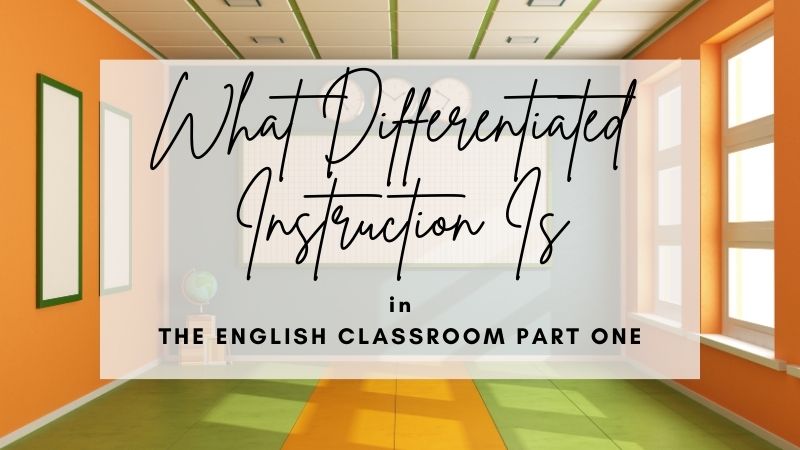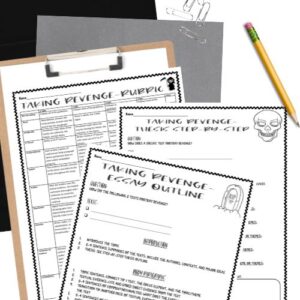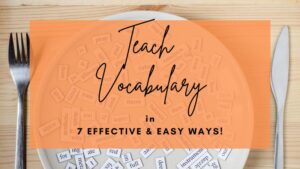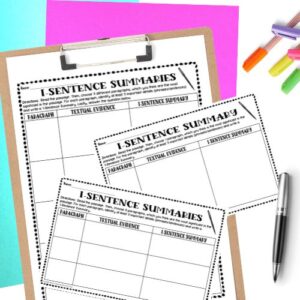Do you try to adjust your lessons to meet your students where they are? If so, you’re using differentiated instruction. What differentiated instruction is depends on many factors.
Differentiated instruction boils down to doing different things. The historic origins of this instructional philosophy are deep. However, the most specific moments to understand began in the 1970s when the Individuals with Disabilities Education Act (IDEA) came into effect. This was specific to establishing Individual Education Plans (IEP) and requiring lessons to meet the needs of students with IEPs to ensure inclusion and to encourage learning success.
Since then, legislation has been updated, but the most important aspect remains that teachers address the needs of students. And this means doing it for all students and not just those with an IEP.
If you have a class full of students, this process might sound daunting as the goal is to try to meet everyone’s needs…but take heart! There are EASY ways to differentiate that do not take a lot of time and effort but do make a big impact.
This blog post is the first in a two-part series about defining what differentiated instruction is and maintaining a differentiated classroom. Check out part two about specific tips and tricks for teachers to differentiate their units, lessons, and activities.
Need help with Test Prep? Check out this FREE Pack of 3 Test Prep Activities to help students achieve success on standardized tests!
What Differentiated Instruction Is By Definition
Many teachers ask about what differentiated instruction is. Differentiated Instruction provides individualized instruction and tools to meet the needs of diverse learners in your classroom. Again, at its most basic, differentiated instruction is doing different things.
What Differentiated Instruction Is does not mean creating individual lesson plans for each student in your classroom. It doesn’t mean incorporating individual activities for each student or teaching each student one-on-one each day.
A differentiated classroom is one in which the teacher includes different approaches and activities to meet the diverse needs of the learners in their English classroom. So what differentiated instruction is can be achieved through considering all students’ needs.

What Differentiated Instruction Is and What It Looks Like
5 Ways to Differentiate in the English Classroom:
#1 By Classroom
Most classes are not made up of students who are all at the same level. For example, one year you might have 10 higher-level students, 10 on-level students, and 10 lower-level students; the next year this division may shift. Each year though, you can differentiate by modifying each class by adding in or changing activities for the different sets of learners. You might extend the time for lessons for some and speed up for others that move more quickly.
What differentiated instruction is and might look like the following if you are teaching a thematic unit on revenge:
Regular Mainstream Class:
- Assign 1-2 texts to allow time for reading and comprehension skills.
- Allow students to complete activities based on only 1 or 2 passages.
- Provide more time in class to work on a project.
- Offer students an alternative to writing a full essay.
Honors Class:
- Assign 3 or more texts.
- Encourage students to complete activities based on 2 or more passages.
- Provide time in and outside of class to work on a project.
- Offer students the opportunity to add in a visual component to a writing assignment.
#2 By Student Level
You could group students by level of ability with higher-level and lower-level students working on similar but modified assignments.
-
- Teacher-led small group: You can create groups where specific support is offered when needed. Do students need help understanding a passage? If so, a teacher-led group might address reading comprehension before attempting the next step.
- Student-led small group: These groups can be mixed cohorts where students are operating at different levels but everyone is getting something from the lesson. This is also a way to group like-skilled students together in order to dig deeper or extend the lesson beyond what others in the class might be doing.
Want some ideas for teaching vocabulary? Check out this post: “Teach Vocabulary in 7 Easy Ways!”
#3 By Mixed Levels
All students learn in different ways, but when a student “teaches” a student who is struggling, the “teacher-student” can grow in problem-solving skills by figuring out how to assist that student. It provides a way to cement the learning for both students, so both win when integrating what differentiated instruction is!
One way to make this happen is with differentiated short story activities such as these ones for characterization in Poe’s “The Cask of Amontillado.” The provided story is chunked to support students in picking out the evidence for character analysis. The activities are also differentiated to include visual and text-focused tasks.
#4 By Standards
-
- Theme/Central Idea – Use a set of differentiated graphic organizers to help students clearly record their ideas.
- Citing Evidence – Here, you can shift the amount of evidence needed. Not everyone needs to include 3 points; some students could include 1 or 2 instead.
- Summarizing – Writing a summary is a key skill for any course so adding in practice is always a good idea. Differentiate that practice with these activities for one-sentence summaries for any text.
- Figurative Language/Words & Phrases – Analyzing figurative language might mean picking and choosing which devices are most relevant since narrowing the amount is a simple way to differentiate. Providing a ‘cheat sheet’ is another way that encourages application and not just memorization of devices.
- Author’s Purpose and Author’s Claim – Vary the types of texts included so that some are more challenging than others to decipher the purpose. You can also vary the types of questions like in this nonfiction reading activity. It uses an original nonfiction narrative with multi-select, multiple choice, short answer, as well as 2-part questions.
#5 By Student-Focused Data
Students can reflect on their own data to see where they need support as a part of what differentiated instruction is. This process can be accomplished with reflective writing in response to assignment feedback – a student portfolio is a great option for this. This time could also be utilized as an opportunity for teacher-student conferences so that students are not working in isolation but can still be self-directed.
From here, students can map out their own goals. Using activities with graphic organizers such as this one for a new year – calendar or school year – students can write or visualize their goals. The activities even include a rubric for teachers to use as part of an assessment.
Once students complete specific activities, they should return to their data. This is an ongoing process of meeting, changing, and drafting new goals.
What Differentiated Instruction Is In Reality
What differentiated instruction is can look different for every classroom. Differentiation is highly effective and valuable for teachers and students alike. Just as each teacher teaches his or her classes in different ways, students learn in different ways. Plus, differentiation supports difference, and we absolutely need students with diverse sets of skills, strengths, personalities, and backgrounds. Differentiation ensures that students’ needs are met to provide an equitable learning experience for all!
Need more fun lessons and activities that integrate what differentiated instruction is? Check out my store Kristin Menke-Integrated ELA Test Prep!





